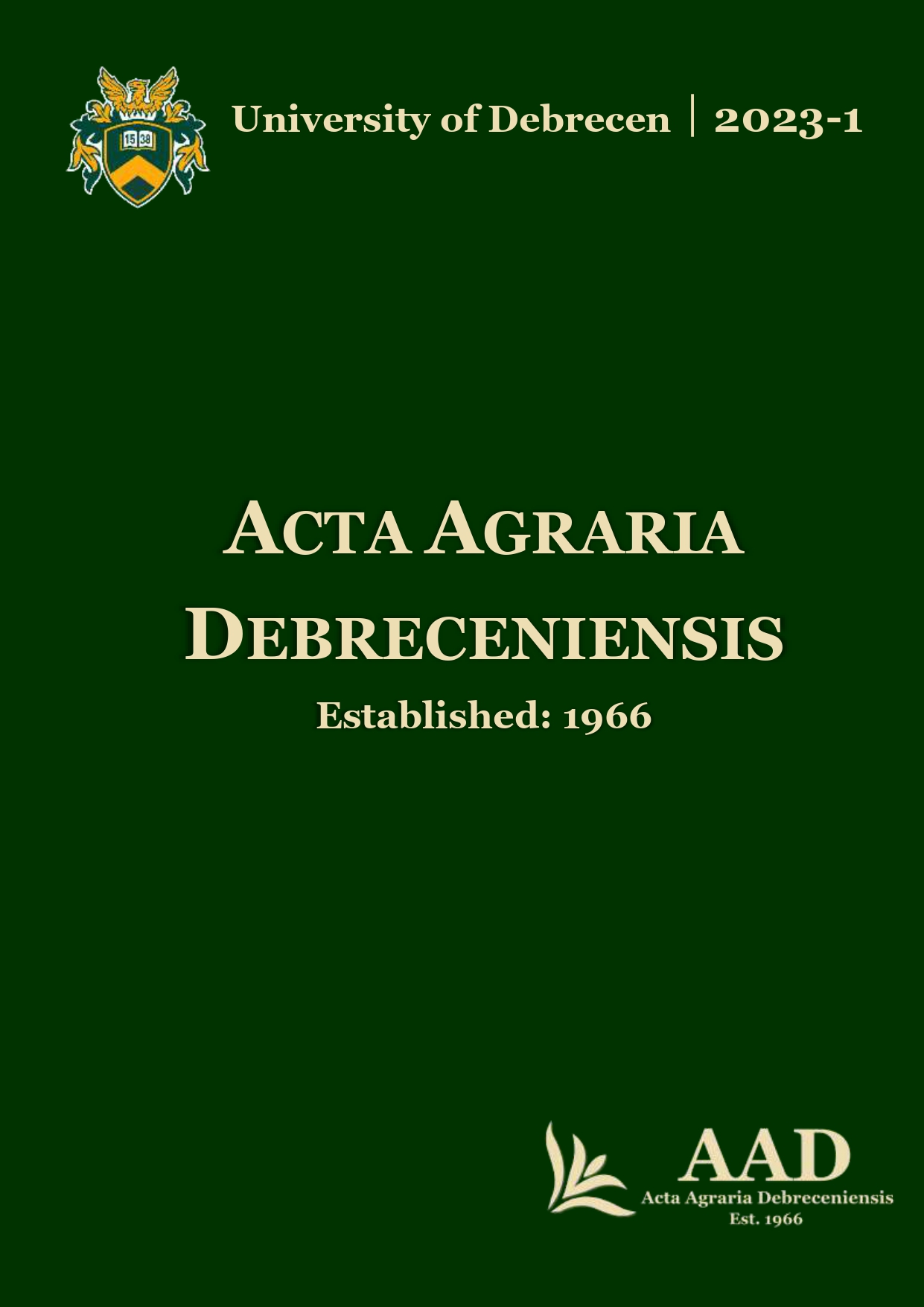A simplified growing model for mixed black locust (Robinia pseudoacacia L.) and poplar (Populus spp.) plantations in the Danube-Tisza Interfluve
Authors
View
Keywords
License
Copyright (c) 2023 by the Author(s)

This work is licensed under a Creative Commons Attribution 4.0 International License.
How To Cite
Accepted 2023-03-08
Published 2023-06-05
Abstract
This study presents a static model of mixed black locust (Robinia pseudoacacia L.) plantation stand structures for inventory stand structures between 10 and 40 years of age. Due to its local character, the model can be advantageous in planning tending operations, making structural factor predictions for the standing stock (main stand) after tending cuts, and preparing local wood production and silvicultural models. The model data presented in this paper show that poplars account for 55–62 % of the volume per hectare due to their faster growth rate in mixed black locust and poplar plantations. Maintaining the black locust part of the stand necessitates harvesting the poplars by the age of 10 at the latest.
References
- Bajdó, E. (1975): A homoki akác-nyár elegyítésének kérdéseiről. Erdészeti Kutatások, 71, 46–48. (in Hungarian)
- Danszky, I. (1973): Erdőművelés; Mezőgazdasági Könyvkiadó: Budapest, Hungary, 418. (in Hungarian)
- Griess, V.C.–Knoke, T. (2011): Growth performance, windthrow, and insects: meta-analyses of parameters influencing performance of mixed-species stands in boreal and northern temperate biomes. Canadian Journal of Forest Research, 41(6), DOI 10.1139/x11-042, 1141–1159.
- Hartley, M.J. (2002): Rationale and methods for conserving biodiversity in plantation forests. Forest ecology and management, 155(1–3), 81–95. DOI: 10.1016/S0378-1127(01)00549-7
- Járó, Z.–Lengyel, G. (1988): Stand establishment. In The Black Locust.; Keresztesi, B., Ed.; Akadémiai Kiadó: Budapest, Hungary, pp. 87–115.
- Keresztesi, B. (1962): A magyar nyárfatermesztés; Mezőgazdasági Kiadó: Budapest, Hungary, 590. (in Hungarian)
- Marron, N.–Epron, D. (2019): Are mixed-tree plantations including a nitrogen-fixing species more productive than monocultures? Forest ecology and management, 441, 242–252., DOI: 10.1016/j.foreco.2019.03.052
- Nichols, J.D.–Bristow, M.–Vanclay, J.K. (2006): Mixed-species plantations: prospects and challenges. Forest Ecology and Management, 233(2–3), 383–390., DOI: 10.1016/j.foreco.2006.07.018,
- Oliveira, N.–Del Río, M.–Forrester, D.I.–Rodríguez-Soalleiro, R.–Pérez-Cruzado, C.–Cañellas, I.–Sixto, H. (2018): Mixed short rotation plantations of Populus alba and Robinia pseudoacacia for biomass yield. Forest Ecology and Management, 410, 48–55., DOI: 10.1016/j.foreco.2017.12.034
- Pretzsch, H.–Forrester, D.I. (2017): Stand dynamics of mixed-species stands compared with monocultures. In Mixed-species forests: Ecology and management; Pretzsch, H.D.–Forrester, D.I.–Bauhus J., Eds.; Springer-Verlag: Berlin, Germany, pp. 117–209., DOI: 10.1007/978-3-662-54553-9_4
- Rebola-Lichtenberg, J.–Streit, J.–Schall, P.–Ammer, C.–Seidel, D. (2021): From facilitation to competition: the effect of black locust (Robinia pseudoacacia L.) on the growth performance of four poplar-hybrids (Populus spp.) in mixed short rotation coppice. New Forests, 52(4), 639–656., DOI: 10.1007/s11056-020-09813-2,
- Rédei, K. (1984): Akácosok fatermése (Forest Research Institute report); Forest Research Institute: Kecskemét, Hungary, 28. (in Hungarian)
- Rédei, K.–Veperdi, I.–Meilby, H. (2006): Stand structure and growth of mixed white poplar (Populus alba L.) and black locust (Robinia pseudoacacia L.) plantations in Hungary. Acta Silvatica and Lignaria Hungarica, 2, 23–32.
- Rédei, K.–Keserű, Z.–Rásó, J.–Juhász, L.–Győri, J.–Antal, B. (2012): Growth and yield of mixed black locust (Robinia pseudoacacia L.) and white poplar (Populus alba L.) stands under sandy soil conditions in Hungary: a case study. Silva Balcanica, 13(1), 20–29.
- Szabó, A.–Gribovszki, Z.–Kalicz, P.–Szolgay, J.–Bolla, B. (2022): The soil moisture regime and groundwater recharge in aged forests in the Sand Ridge region of Hungary after a decline in the groundwater level: an experimental case study. Journal of Hydrology and Hydromechanics, 70(3), 308–320., DOI: 10.2478/johh-2022-0019
- Sopp, L. (1974): Fatömeg számítási táblázatok, fatermési táblákkal; Mezőgazdasági Kiadó: Budapest, Hungary. 419. (in Hungarian)

 https://doi.org/10.34101/actaagrar/1/12385
https://doi.org/10.34101/actaagrar/1/12385